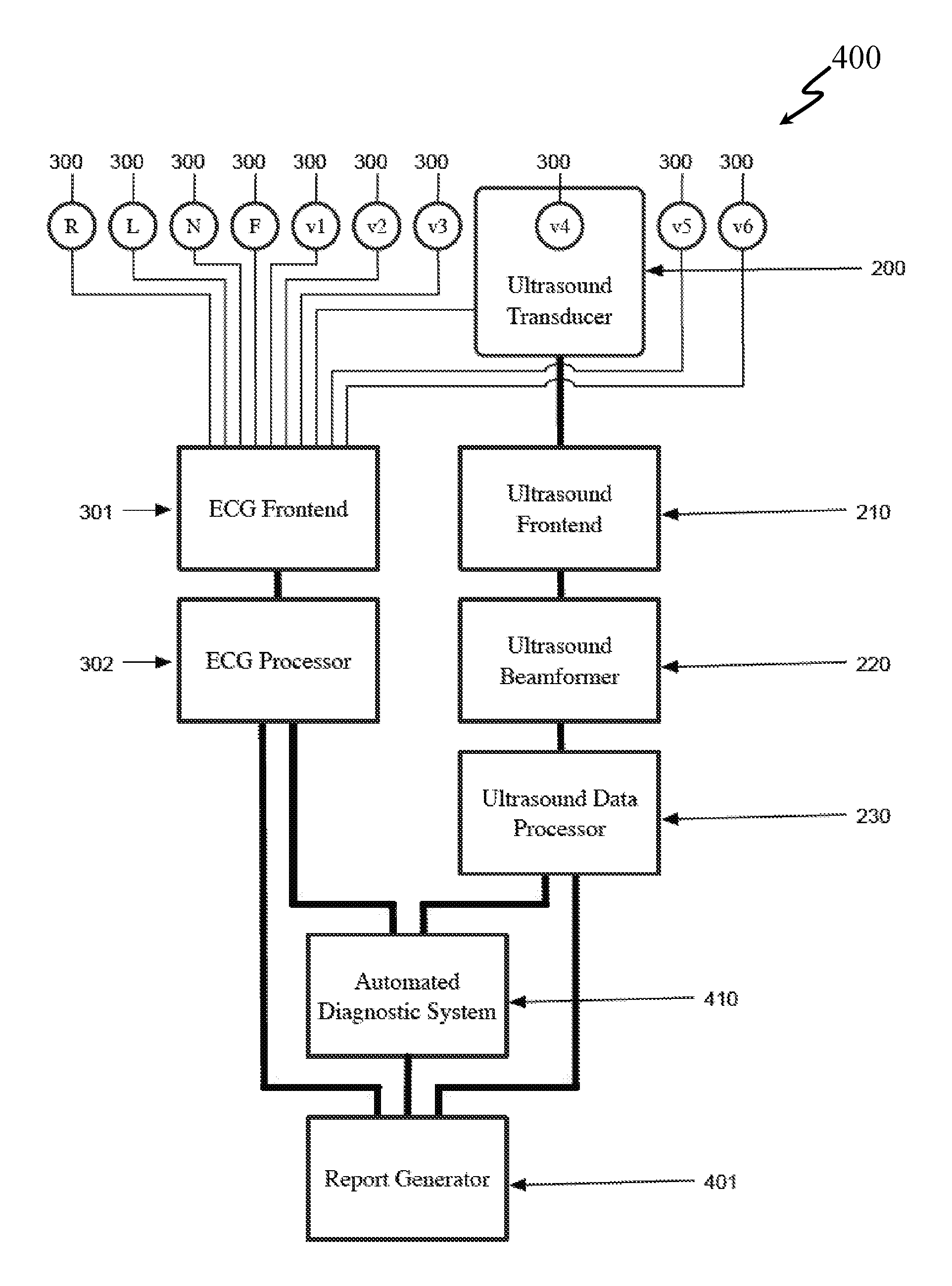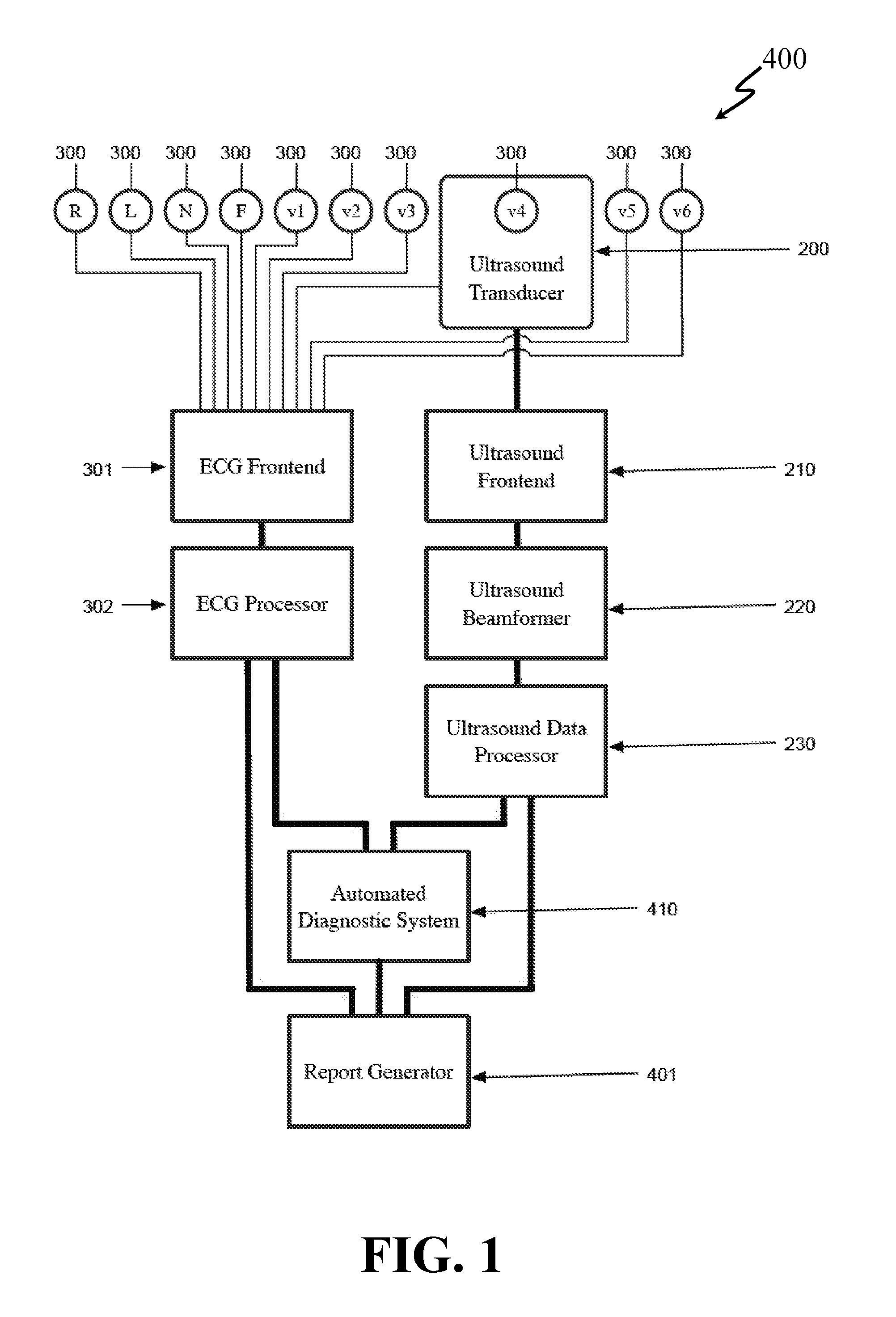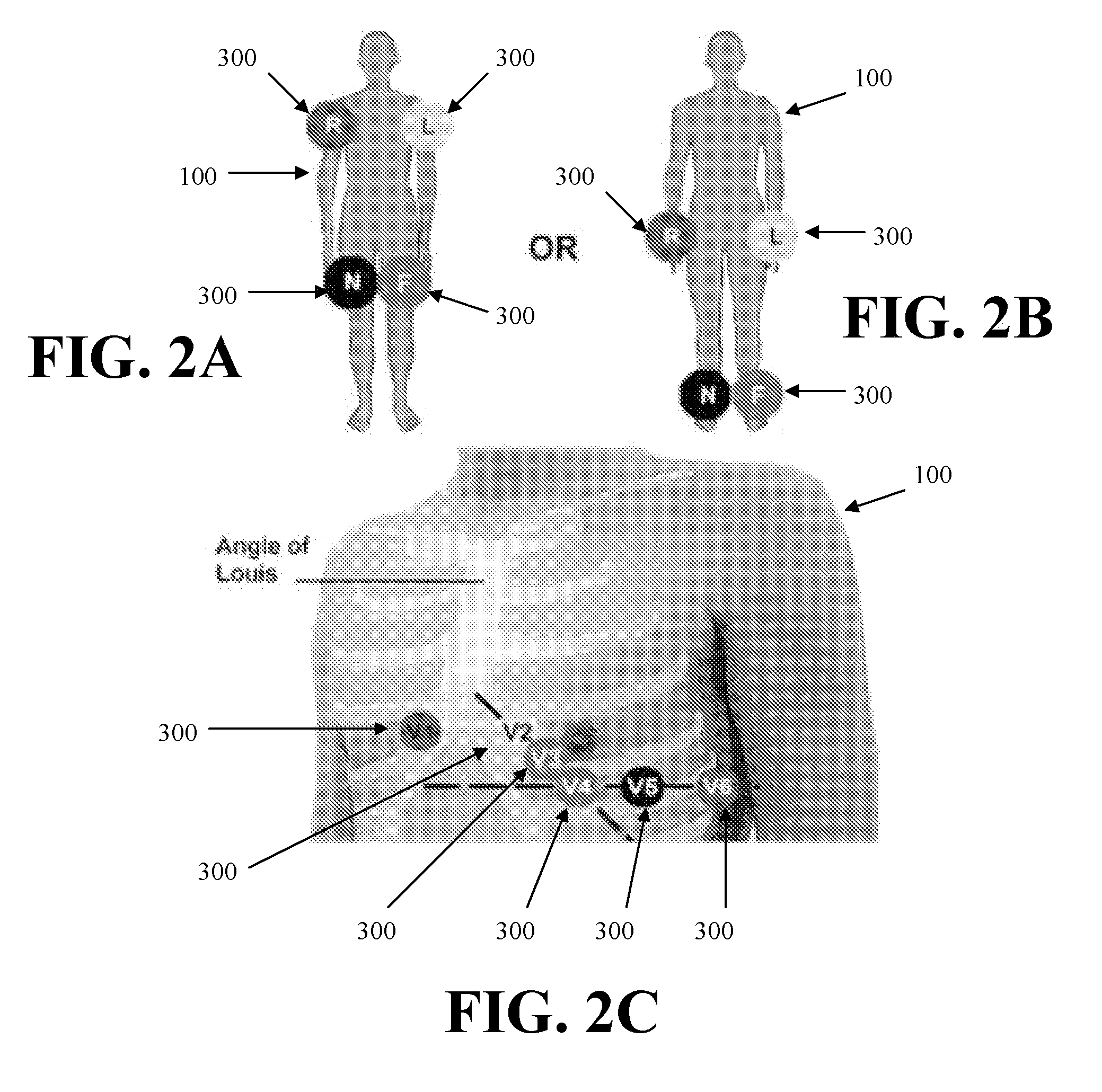System and Method for Combined ECG-Echo for Cardiac Diagnosis
a combined ecg-echo and cardiac diagnosis technology, applied in the field of combined ecg-echo for cardiac diagnosis, can solve the problems of poor contractility, mechanical dysfunction, cardiac dysfunction, etc., and achieve the effect of eliminating potential difficulties and speeding up the acquisition of diagnostic data
- Summary
- Abstract
- Description
- Claims
- Application Information
AI Technical Summary
Benefits of technology
Problems solved by technology
Method used
Image
Examples
example no.1
EXAMPLE NO. 1
[0130]While the ECG is a simple test that is used to diagnose cardiac hypertrophy and enlargement (ventricles and atria) it is frequently wrong. A way to assess cardiac hypertrophy and enlargement is with an echocardiogram. However, echo requires a trained technician and is expensive.
[0131]An attribute of an embodiment of present invention is that the ECG should never again be used to diagnose cardiac hypertrophy and enlargement. It may be used for rate, rhythm, conduction disturbance, infarction, etc., but it should never be called upon to assess cardiac hypertrophy and enlargement.
[0132]An approach of an embodiment of the present invention provides an echo transducer and software that automatically measures the size of the heart. A transducer (or small transducer array) would be placed on the chest and a 3-D echo taken, allowing for automated positioning of the image and automated measurement. A technician would not be required. This transducer would be lightweight an...
PUM
 Login to View More
Login to View More Abstract
Description
Claims
Application Information
 Login to View More
Login to View More - R&D
- Intellectual Property
- Life Sciences
- Materials
- Tech Scout
- Unparalleled Data Quality
- Higher Quality Content
- 60% Fewer Hallucinations
Browse by: Latest US Patents, China's latest patents, Technical Efficacy Thesaurus, Application Domain, Technology Topic, Popular Technical Reports.
© 2025 PatSnap. All rights reserved.Legal|Privacy policy|Modern Slavery Act Transparency Statement|Sitemap|About US| Contact US: help@patsnap.com



